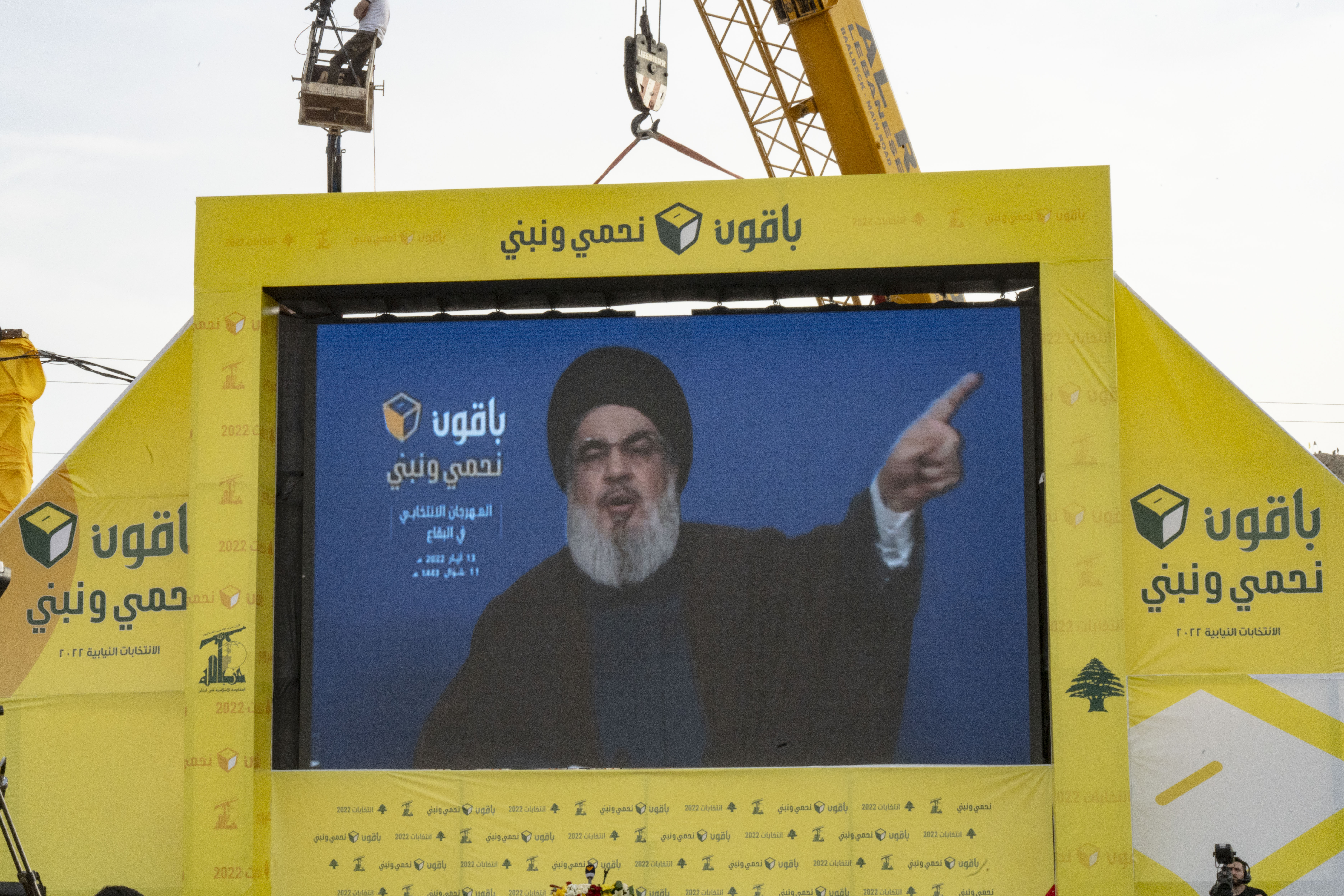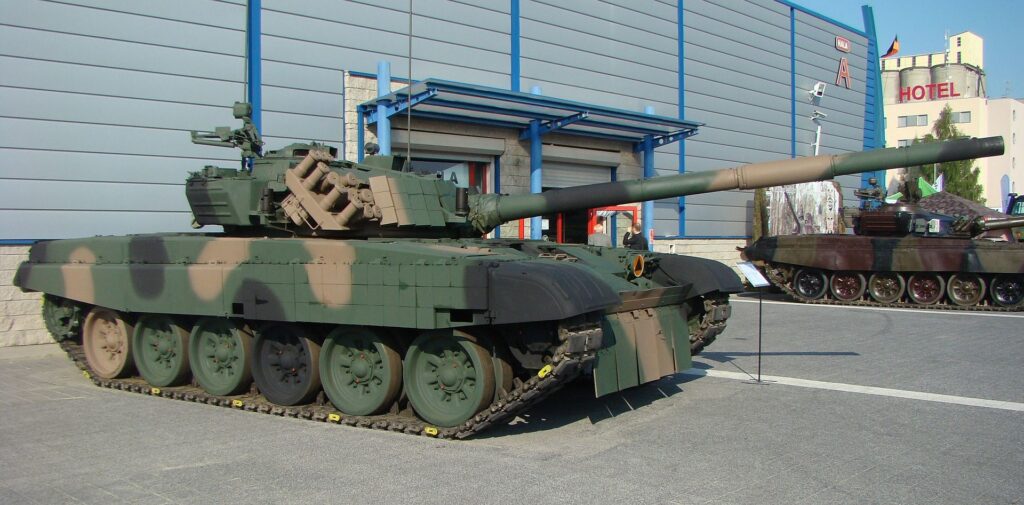Hezbollah Leader Signals Willingness to Escalate Conflict With Israel
Hezbollah leader Hassan Nasrallah has been under internal pressure to increase attacks on Israel, sparking fear of a wider regional conflict.

Hezbollah leader Hassan Nasrallah says his Lebanese-based militants joined the fight alongside Hamas the day after the Oct. 7 attack on Israel that sparked the war.
Nasrallah, speaking from an undisclosed location Friday, addressed the conflict by paying tribute to at least 57 of the group’s fighters that he said have died in clashes with the Israeli military since the Hamas attack. Nasrallah has faced pressure from within his organisation, considered Israel’s strongest and most capable enemy, to fully commit to opening a northern front in support of their close ally Hamas.
“The aftermath of the [Oct. 7 attack] heralds a changed landscape, necessitating a shared responsibility from all parties,” he said via telelink. “Two objectives demand our attention: Halting the aggression against Gaza, and securing a victory for Hamas in the region.”
As the region nervously waited for Nasrallah, whose large military and tens of thousands of rockets and missiles could radically change the face of the conflict into a regional war, Hezbollah and Israel had the heaviest exchange of fire thus far on Thursday and early Friday. Nasrallah, a crucial leader in the Iranian-backed alliance that includes Hamas, had been under some internal pressure to directly intervene before Friday’s address, according to a Lebanese security official who meets with the group.
In recognition of the tense regional situation, U.S. Secretary of State Anthony Blinken arrived in Israel Friday to press for periodic humanitarian ceasefires to allow civilians to escape fighting as the war in Gaza enters its 28th day.
Blinken has repeatedly met with the Israeli leadership since the Oct. 7 assault by Hamas and its allies that killed roughly 1400 Israelis, took more than 200 people hostage, and sparked an ongoing military operation that’s so far killed about 9,000 Palestinians, while battering the coastal strip’s civilian infrastructure with thousands of air strikes.
Although the U.S. has strongly backed Israel–including a proposed $14 billion military aid package–a level of civilian suffering and displacement that multiple UN human rights experts have warned pose a humanitarian disaster.
“Blinken needs to convince the Israelis to make it easier to get aid in and civilians and hostages out,” said a regional diplomat, who spoke off the record to be candid. “The footage out of Gaza is inflaming the region.”
Particularly Israel’s northern border with Lebanon, where daily confrontations between Hamas and Iran ally Hezbollah have conducted near daily attacks on IDF positions and fired rockets at now evacuated Israeli towns.
“The letter Tuesday from the [rank and file] was directed at Nasrallah and the other leaders of the Iranian axis,” said the Lebanese official who declined to be named over security concerns. “That Hezbollah released the letter from the fighters to the leadership means Nasrallah recognises this is a debate. Releasing some pressure from the fighters by letting them escalate operations Thursday and last night is part of the process.”
About 20,000 Lebanese civilians have been displaced by the heaviest fighting along the border since the 2006 Lebanon War that have killed aeight Israeli soldiers and a civilian.
After a drone loaded with explosives struck an Israeli position Friday morning in the disputed Shebba Farms area of the border, Lebanese and Israeli media reported a series of Israeli medivac helicopters present at the scene but no details of casualties were available.
Part of the increase in operations along the border comes from a decision by Hezbollah to allow Palestinian militants from Hamas and other groups to engage in attacks from Lebanese territory, which the group has been loath to do in the past, said the Lebanese official.
“Palestinian factions have always complained that Hezbollah would restrict access for attacks and rocket launches against Israel,” they said. “There was a certain amount of arrogance by Hezbollah compared to these other factions but that changed with the Oct. 7 operation. The public and private pressure to respond to the [civilian casualty situation] in Gaza meant they had to approve operations by these groups. But it’s unclear if Nasrallah will openly call for escalation [on Friday.]”
The Israeli ground invasion of Gaza, which began this week, has surrounded Gaza City on two sides and IDF forces appear to be using these positions as jumping off spots for raids to kill Hamas commanders and search for more than 200 hostages taken during the Oct 7 attack. At least 19 Israeli soldiers have been killed this week in what both sides say has been close quarters fighting. Hamas does not announce its casualties.
“The Israelis are employing a smart counterterrorism operation thus far, they’re only raiding into the most heavily built up urban areas to avoid getting caught in ugly street battles,” said the regional diplomat. “But there needs to be pauses for negotiations to get hostages released and aid supplies inside. Multiple [countries] are assisting in intelligence gathering because of the dozens of foreign hostages. The Israelis need to cooperate with allies more than they’re used to because of the regional implications.”
On Friday, the New York Times reported that drones used by U.S. special operations forces have consistently overflown Gaza in the past weeks as part of an joint intelligence operation with the Israelis to search for hostages, believed held in the kilometres of reinforced tunnels built by Hamas over the last two decades underneath Gaza.
U.S. involvement has rankled a group of Iranian-backed militias in Iraq, who promised an escalation in attacks on U.S. facilities in Iraq and Syria. The Islamic Resistance in Iraq, a coalition of Iran and Hezbollah allies that served as a militia against ISIS almost a decade ago, said it would begin more “intense and expansive” operations in the coming week. Militants in Syria, Iraq, and Yemen have all fired drones and missiles at Israeli and US targets with only minor success thus far.
“What’s going to happen when one of these kills a bunch of coalition troops in [Iraq]?” said the regional diplomat. “What’s going to happen if or when the U.S., U.K. or France participates in a raid inside Gaza to free one of their nationals? How will the region respond?”
“It’s pretty incredible that we get to sit and wait for Nasrallah to tell us what’s going to happen next,” said the diplomat. “Iran and its allies very much have the initiative right now.”



